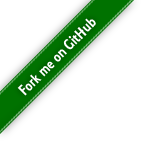Warning
This site has been replaced by the new QIIME 2 “amplicon distribution” documentation, as of the 2025.4 release of QIIME 2. You can still access the content from the “old docs” here for the QIIME 2 2024.10 and earlier releases, but we recommend that you transition to the new documentation at https://amplicon-docs.qiime2.org. Content on this site is no longer updated and may be out of date.
Are you looking for:
the QIIME 2 homepage? That’s https://qiime2.org.
learning resources for microbiome marker gene (i.e., amplicon) analysis? See the QIIME 2 amplicon distribution documentation.
learning resources for microbiome metagenome analysis? See the MOSHPIT documentation.
installation instructions, plugins, books, videos, workshops, or resources? See the QIIME 2 Library.
general help? See the QIIME 2 Forum.
Old content beyond this point… 👴👵
cluster-features-closed-reference: Closed-reference clustering of features.¶
Docstring:
Usage: qiime vsearch cluster-features-closed-reference [OPTIONS]
Given a feature table and the associated feature sequences, cluster the
features against a reference database based on user-specified percent
identity threshold of their sequences. This is not a general-purpose closed-
reference clustering method, but rather is intended to be used for
clustering the results of quality-filtering/dereplication methods, such as
DADA2, or for re-clustering a FeatureTable at a lower percent identity than
it was originally clustered at. When a group of features in the input table
are clustered into a single feature, the frequency of that single feature in
a given sample is the sum of the frequencies of the features that were
clustered in that sample. Feature identifiers will be inherited from the
centroid feature of each cluster. See the vsearch documentation for details
on how sequence clustering is performed.
Inputs:
--i-sequences ARTIFACT FeatureData[Sequence]
The sequences corresponding to the features in
table. [required]
--i-table ARTIFACT FeatureTable[Frequency]
The feature table to be clustered. [required]
--i-reference-sequences ARTIFACT FeatureData[Sequence]
The sequences to use as cluster centroids.
[required]
Parameters:
--p-perc-identity PROPORTION Range(0, 1, inclusive_start=False,
inclusive_end=True) The percent identity at which clustering should be
performed. This parameter maps to vsearch's --id
parameter. [required]
--p-strand TEXT Choices('plus', 'both')
Search plus (i.e., forward) or both (i.e., forward
and reverse complement) strands. [default: 'plus']
--p-threads NTHREADS The number of threads to use for computation.
Passing 0 will launch one thread per CPU core.
[default: 1]
Outputs:
--o-clustered-table ARTIFACT FeatureTable[Frequency]
The table following clustering of features.
[required]
--o-clustered-sequences ARTIFACT FeatureData[Sequence]
The sequences representing clustered features,
relabeled by the reference IDs. [required]
--o-unmatched-sequences ARTIFACT FeatureData[Sequence]
The sequences which failed to match any reference
sequences. This output maps to vsearch's
--notmatched parameter. [required]
Miscellaneous:
--output-dir PATH Output unspecified results to a directory
--verbose / --quiet Display verbose output to stdout and/or stderr
during execution of this action. Or silence output
if execution is successful (silence is golden).
--example-data PATH Write example data and exit.
--citations Show citations and exit.
--use-cache DIRECTORY Specify the cache to be used for the intermediate
work of this action. If not provided, the default
cache under $TMP/qiime2/ will be used.
IMPORTANT FOR HPC USERS: If you are on an HPC system
and are using parallel execution it is important to
set this to a location that is globally accessible
to all nodes in the cluster.
--help Show this message and exit.
Import:
from qiime2.plugins.vsearch.methods import cluster_features_closed_reference
Docstring:
Closed-reference clustering of features.
Given a feature table and the associated feature sequences, cluster the
features against a reference database based on user-specified percent
identity threshold of their sequences. This is not a general-purpose
closed-reference clustering method, but rather is intended to be used for
clustering the results of quality-filtering/dereplication methods, such as
DADA2, or for re-clustering a FeatureTable at a lower percent identity than
it was originally clustered at. When a group of features in the input table
are clustered into a single feature, the frequency of that single feature
in a given sample is the sum of the frequencies of the features that were
clustered in that sample. Feature identifiers will be inherited from the
centroid feature of each cluster. See the vsearch documentation for details
on how sequence clustering is performed.
Parameters
----------
sequences : FeatureData[Sequence]
The sequences corresponding to the features in table.
table : FeatureTable[Frequency]
The feature table to be clustered.
reference_sequences : FeatureData[Sequence]
The sequences to use as cluster centroids.
perc_identity : Float % Range(0, 1, inclusive_start=False, inclusive_end=True)
The percent identity at which clustering should be performed. This
parameter maps to vsearch's --id parameter.
strand : Str % Choices('plus', 'both'), optional
Search plus (i.e., forward) or both (i.e., forward and reverse
complement) strands.
threads : Threads, optional
The number of threads to use for computation. Passing 0 will launch one
thread per CPU core.
Returns
-------
clustered_table : FeatureTable[Frequency]
The table following clustering of features.
clustered_sequences : FeatureData[Sequence]
The sequences representing clustered features, relabeled by the
reference IDs.
unmatched_sequences : FeatureData[Sequence]
The sequences which failed to match any reference sequences. This
output maps to vsearch's --notmatched parameter.

